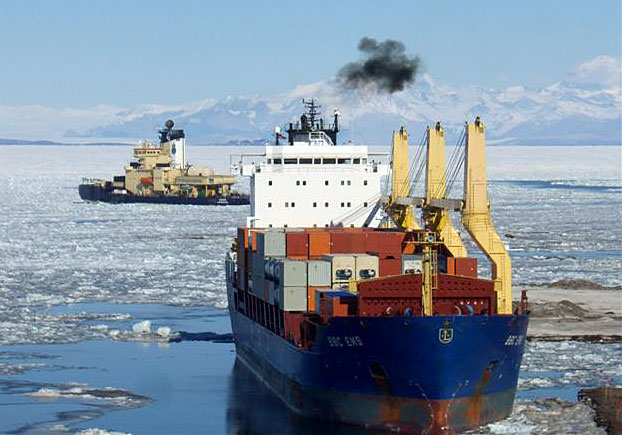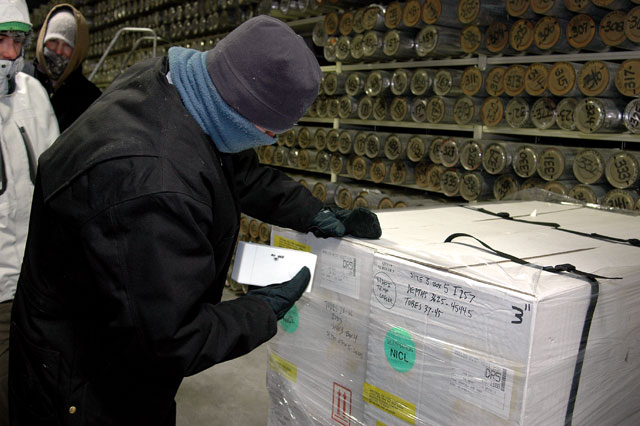Cold cargoColorado engineering students design barcode scanner for Antarctic temperaturesPosted June 17, 2011
It’s the classic story of trying to build a better mousetrap — but in Antarctica. In this case, the invention has nothing to do with catching rodents but capturing data on the thousands of items of cargo shipped by the U.S. Antarctic Program (USAP) The USAP uses a bar code system to track all that stuff, but the scanners have proven to be unreliable in the extreme temperatures. Some of the devices lose data when the instruments get cold, forcing employees to use old-fashioned pencil and paper as a backup. Workers at the South Pole Station “I knew there had to be a better way,” said Mary Beckman, an employee with Raytheon Polar Services Beckman is a business systems analyst with the RPSC IT department. She started with the program in 2005, and her first job as a project engineer involved working with logistics and moving cargo. That’s when she first learned about some of the problems with today’s electronic trackers. 
Photo Credit: Curtis Harry/Antarctic Photo Library
The cargo ship BBC EMS docked at McMurdo Station. Most cargo to Antarctica arrives by one ship each year.
The problem is that such devices don’t work well in Antarctica’s extreme cold environment, according to Beckman. (Sun glare during the 24-hour daylight summer is another issue, say users.) The batteries often drain down too quickly to get the job done in time — a common complaint among those who also use digital cameras on the Ice. She was interested in a better mousetrap. “I thought this would be a good project for college kids,” she said. So Beckman enlisted some engineering students from the Colorado School of Mines “I like to encourage ideas, thoughts and process improvements. I’m all about process improvements,” Beckman said. The students, led by Connor Coltharp, an electrical engineering student who graduated in May, came up with a two-fold solution. The better “mousetrap” in this case is a heated and insulated barcode scanner. The students took apart a regular barcode scanner — a device smaller than a cell phone — and reassembled its parts into a plastic case, with two resistors powered by a battery. An itchy substance called cryogel insulates the lining of the case to trap the heat. “The entire project has basically been an exercise in industrial engineering,” Coltharp said. “We’ve learned gobs about different things, such as having to think about the size of buttons and the size of a hand” when considering the design. The team put the scanner through its paces during two rigorous tests. The first took place at the National Ice Core Laboratory The test involved a “control” scanner and the modified extreme-cold tracker. A scan was made every 30 seconds with each device for one hour. The control scanner failed about 55 minutes into the test. A second trial occurred at UNAVCO The unprotected scanner failed after the first 30 minutes of “cold soaking.” The modified scanner continued to be operational after two hours. The students also offered a low-tech solution, creating perforated barcodes that could be detached from a piece of cargo and scanned indoors. “Maybe we can use some of the ideas they came up with to help with cargo logistics,” Beckman said. “They had a lot of good ideas.” |



For USAP Participants |
For The Public |
For Researchers and EducatorsContact UsU.S. National Science FoundationOffice of Polar Programs Geosciences Directorate 2415 Eisenhower Avenue, Suite W7100 Alexandria, VA 22314 Sign up for the NSF Office of Polar Programs newsletter and events. Feedback Form |



